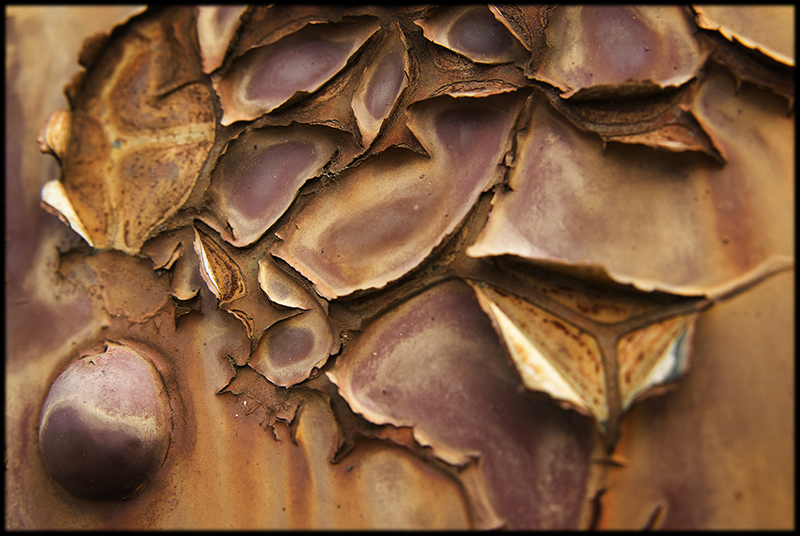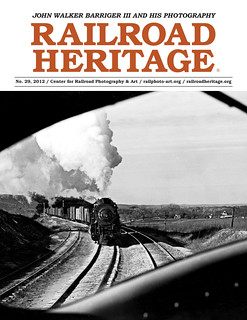
Photograph by Colin Winterbottom.
July 1 through October 31, 2012. Steamtown National Historic Site, Scranton, Pennsylvania. Daily from 9:00 a.m. to 5:00 p.m. Exhibition included in normal park entrance fee of $7. Corrosion is the trace of history across the face of its artifacts. Decades of rain, dew, and oxygen against the steel and iron giants dotting the Steamtown NHS rail yards have left their marks on the behemoths in the form of rust, stains, and peeling paint. Some see these marks as scars, degrading the mighty engines and hefty cars to useless relics; effacements that prove their obsolescence. Others look closer and find beauty in the corrosion. Using macro-photography camera lenses, photographer Colin Winterbottom has enlarged the smallest details in the decay to the point of abstraction. Isolating the textures, patterns, shapes, lines and colors from the wider context of the rail yard, the photographs take on a very different quality. The viewer’s mind often tries to create context for the images, a process that is as engaging as the photos themselves.

